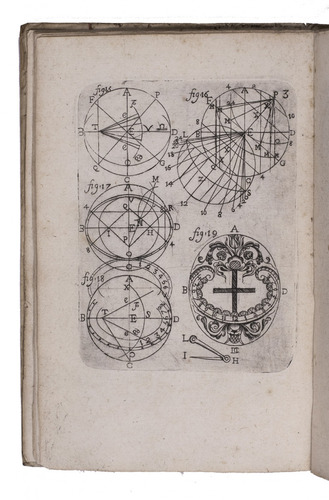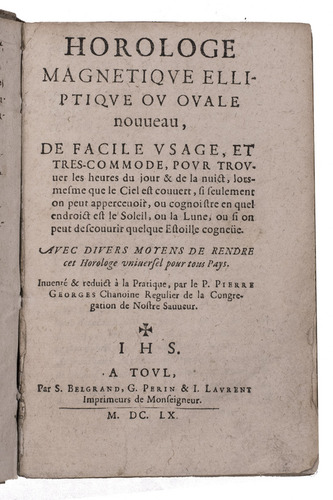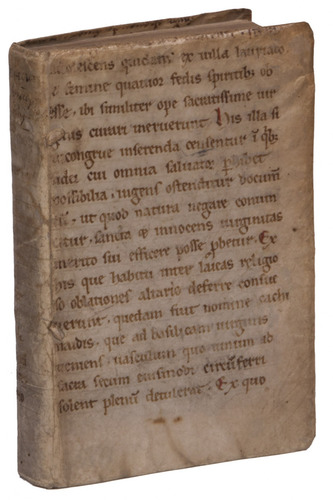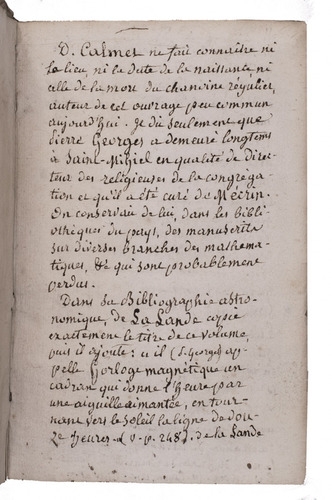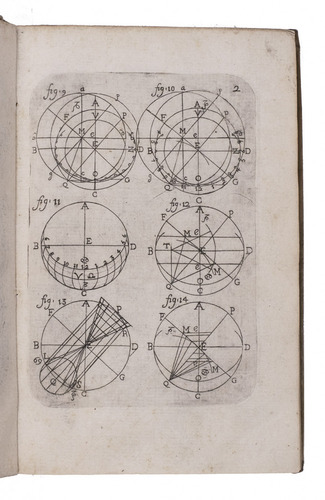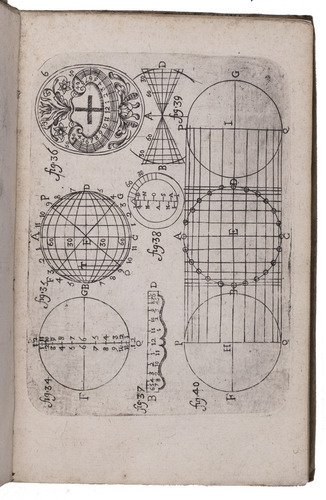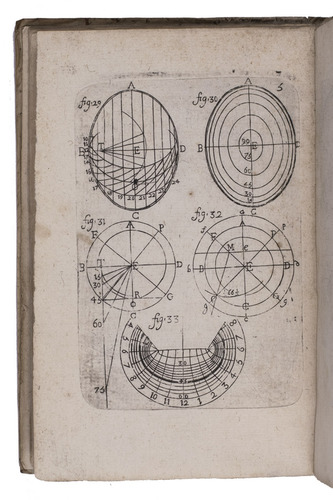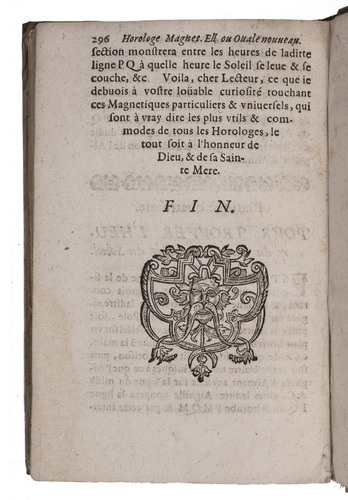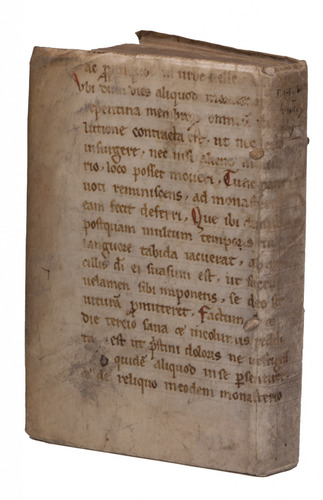GEORGES, Pierre.
Horologe magnetique elliptique ou ovale nouveau, de facile usage, et tres-commode, pour trouver les heures du jour & de la nuict, . . .
Toul (Lorraine), Simon Belgrand, G. Perin and I. Laurent, 1660. 8vo. With 8 engraved plates (1-7 numbered) with 46 numbered figures, and a letterpress folding table after page 196. Contemporary parchment made from the lower part of a leaf from a Jesuit manuscript (Acta sanctorum, for 25 July, this part not published until 1729). [12], ''296'' [= 298], [2 blank] pp.
€ 11,500
First edition of a curious and extensively illustrated work on what the author calls a "horloge magnetique", a horizontal sundial with a rotating magnetic needle. He makes great (and dubious) claims for his invention: it can be used day or night, even when the sky is overcast, as long as one can make out the sun, moon or a known star. The magnetic needle did no doubt help one set it up at any location, as he claimed.
The title-page notes that Pierre Georges is Chanoine régulier at the Congrégation de Notre-Sauveur, established by the archbishop of Toul in 1623 under Jesuit influence, and it also gives the Jesuit "IHS" with cross. Given that Jesuit association, the manuscript fragment used for the binding is particularly interesting, for it contains a text known from the Acta sanctorum (which is arranged by the Saints' feast days, in this case 25 July).
With an early 19th-century 2-page note on a free endleaf with information about Georges, the dedicatee François Grimaldi and the book. In good condition. Berthoud, Histoire de la mesure du temps 2, p. 348; Houzeau & Lancaster 11491; Tardy, Bibl. mesure du temps, p. 108.
Related Subjects:









